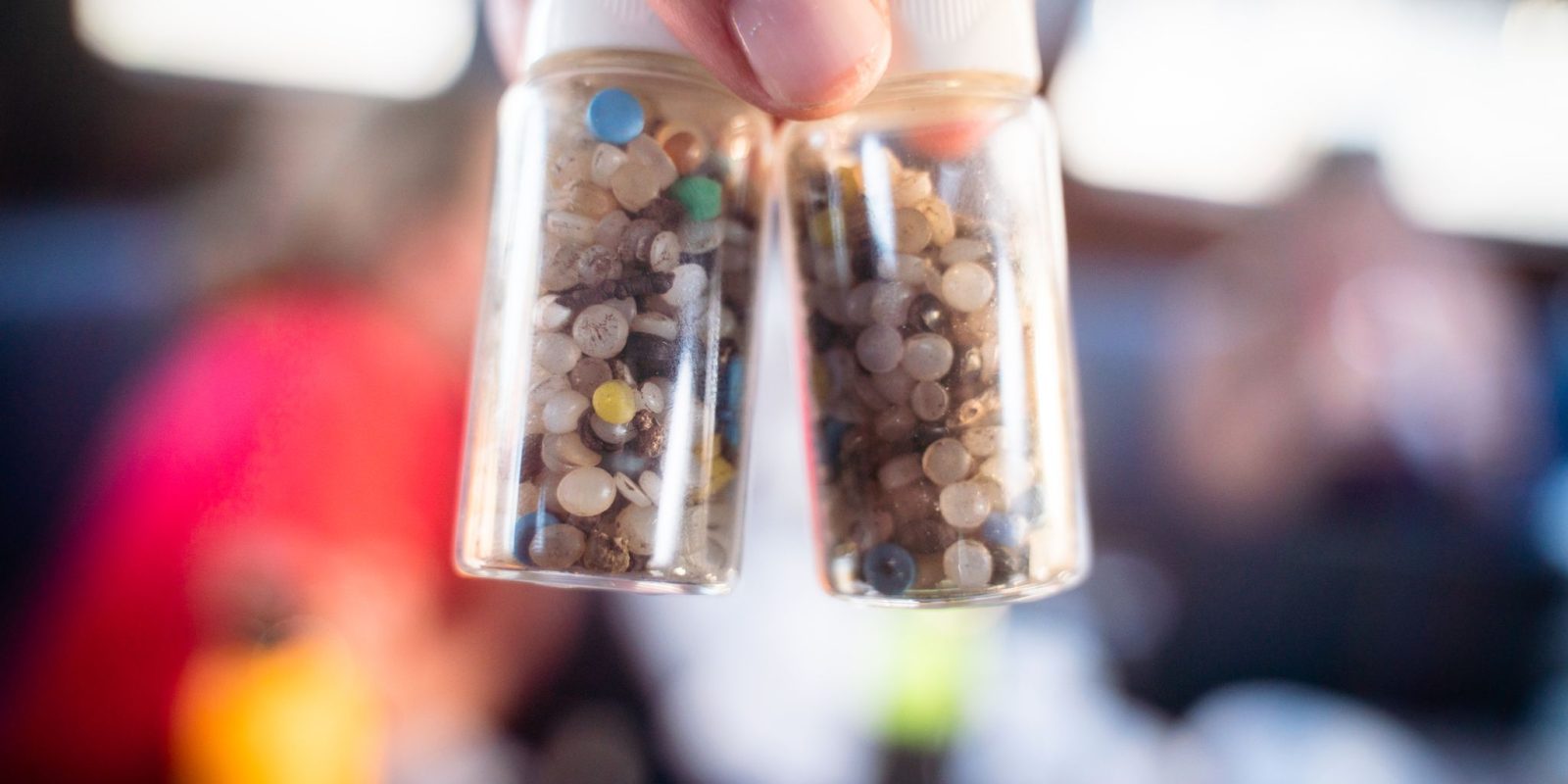A nurdle (also known as a ‘pre-production pellet’) is a small ball of plastic measuring approximately 2-3mm in diameter. They are the building blocks for nearly all plastic products and are transported around the world to be melted down and moulded by manufacturing companies to make anything from plastic bottles to pipelines.

Credit: Nita-Jirgensone
How do nurdles end up in the ocean?
Because of their small size, it is difficult to keep nurdles contained, and they often spill out all along the plastics supply chain into rivers, waterways and the ocean. Accidental spills can happen wherever nurdles are handled or transported, and increasingly large spillage events are occurring at sea, making the issue worse. It is estimated that more than 250,000 tonnes of nurdles enter the ocean every year, and they are found in almost every country. This is something that has been all too apparent during our eXXpedition voyages.

On eXXpedition Round the World, our crew took part in The Great Nurdle Hunt – a global citizen science initiative of the UK-based charity Fidra. On Leg 2 (Azores to Antigua), 9 members of our crew found 424 nurdles on Santa Barbara beach in the Azores in just 33 minutes! Sadly, this wasn’t a stand alone event. We regularly find nurdles in our trawl samples and on nearly every beach clean.

Credit: Sophie Dingwall
Why are nurdles a problem?
Once loose, nurdles pollute the natural environment, accumulate toxins and can harm wildlife that mistake them for food. Due to their small size and often clear colour, nurdles can look like fish eggs which makes them particularly attractive to species such as seabirds, fish and crustaceans. Consuming plastics can block their stomachs and eventually cause animals to starve to death through a false sense of feeling full. Nurdles also absorb chemicals like DDT and PCBs which can transfer up through food chains. Further up the food chain, the concentration of toxins increases, causing more harm as they transfer to the animals that eat them.
Case Study: X-Press Pearl
In May 2021, the cargo ship ‘X-Press Pearl’ spilt 1,680 tonnes of plastic pellets, 9,700 tonnes of epoxy plastics and other toxic pollutants nine miles off the Sri Lankan coast. With plastic accumulating on beaches up to 2 meters high, it is one of the worst environmental disasters in the country’s history, and the single largest plastic pellet pollution event the world has ever seen. It continues to cause overwhelming economic, social and environmental impacts, and a legacy of toxic pollution that will continue to have profound and enduring impacts for many generations to come.
This incident has resulted in the severe pollution of 750 km of pristine, biodiverse coastline and deaths of many hundreds of charismatic marine species such as turtles, whales and dolphins. Consumption of fish, which is the main protein source for more than 40% of Sri Lankans, has reduced drastically, and the livelihood of fishers is severely impacted due to coastal fishing ban across the entire West coast.

Credit: Centre for Environmental Justice, Sri Lanka
What can we do about nurdles?
Whilst it can be easy to feel overwhelmed by the plastic pollution crisis in our ocean, there is hope and many environmental organisations, community groups and individuals are working hard to create positive change.
This week (from November 22nd – November 25th 2021), there is an opportunity to try and progress discussions to secure a classification of plastic pellets as ‘harmful substances’ through a submission that Sri Lanka has made to the International Maritime Organization (IMO). Stricter classification under the IMO would mean pellets are handled at sea akin to other harmful and hazardous substances. If Sri Lanka’s submission is properly considered at the meeting, it would hopefully mean far stricter handling and labelling instructions are enforced, as well as consideration of below deck stowage and adequate disaster response protocols that would limit the fallout felt in Sri Lanka in the wake of future shipping disasters.
How can you help?
A show of public support in advance of this meeting will be enormously helpful towards securing a classification of plastic pellets as ‘harmful substances’, and raising the profile of this little-known but highly destructive form of plastic pollution.
If you’d like to help then sign and share the petition by the Environmental Investigation Agency.




